Located just outside the entrance to the Needles District of Canyonlands National Park in Utah, the Newspaper Rock State Historic Monument is like a living museum with an amazing selection of over 650 Native American petroglyphs.
The 200-square-foot rock site is a part of the Wingate sandstone cliffs that enclose the upper end of Indian Creek Canyon, known as a prominent climbing area, and it is one of the largest collections of petroglyphs in the country and one of the West’s most famous rock-art sites.
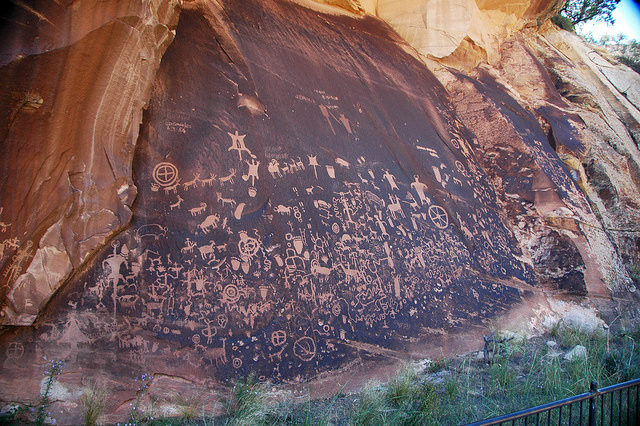
These remarkable petroglyphs have a mixture of human, animal, and abstract forms that record perhaps 2,000 years of human activity in the area. The series of images depict a variety of figures such as buffalos, deer, lizards, antelopes, and riders on horses. Some designs are pecked over older ones and measure up to 5 feet in height. The site was used by multiple cultures for a long period of time and many generations of people saw these markings and contributed their own.
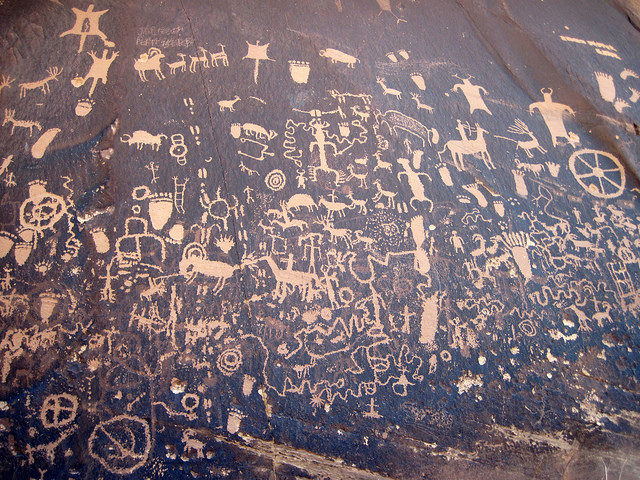
The main groups responsible for this fantastic panel of prehistoric and historic petroglyphs are the Archaic Indians, the Anasazi, Fremont, Navajo, and Pueblo. The more recent rock art on the panel, such as the figures mounted on horseback, is thought to have been created by the ancestors of the Ute people, the oldest residents of Colorado, inhabiting the mountains and vast areas of Wyoming, Northern New Mexico, Arizona, Eastern Nevada, Colorado, and Utah.
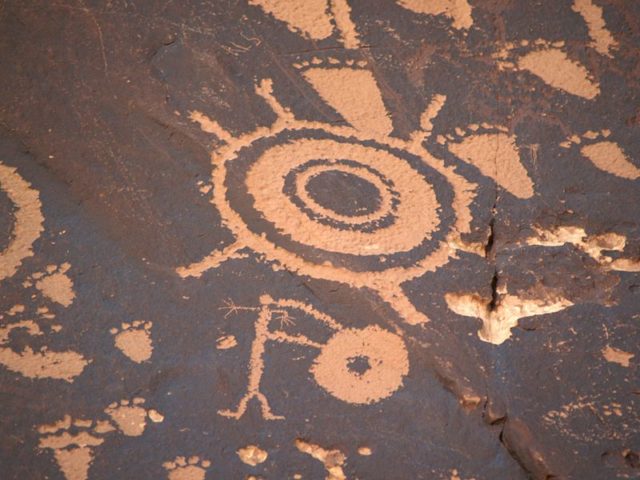
The rock is called Tse’ Hane in Navajo, which translates to a “rock that tells a story“ because it is believed that these drawings form a written language with which early people communicated. However, there is no linear story and the exact purpose and meaning of these symbols, or even why so many of them are concentrated in one small area, is still not clearly understood.
Much is left for individual admiration and interpretation. According to some scholars, the symbols could be some sort of family or clan symbols, migratory routes, or spiritual totems. Some believe that some of the symbols mark territory boundaries or even calendar events.
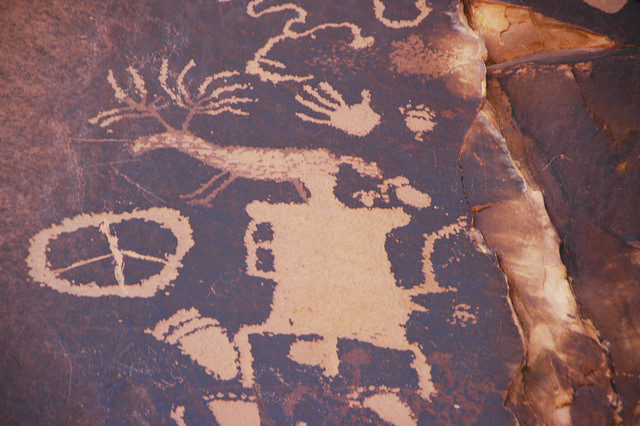
The many figures and patterns have been inscribed into “desert varnish“ or “rock varnish“, a natural occurrence usually found on exposed rock surfaces in arid regions. It’s a one micrometer thick mineral-encrusted rock surface which forms over thousands of years primarily composed of clay minerals along with iron and manganese oxide minerals which often colors entire mountains and is black or reddish brown. Most rock varnish appears black because of the manganese, a chemical element which occurs in wet environments and often found in minerals in combination with iron.
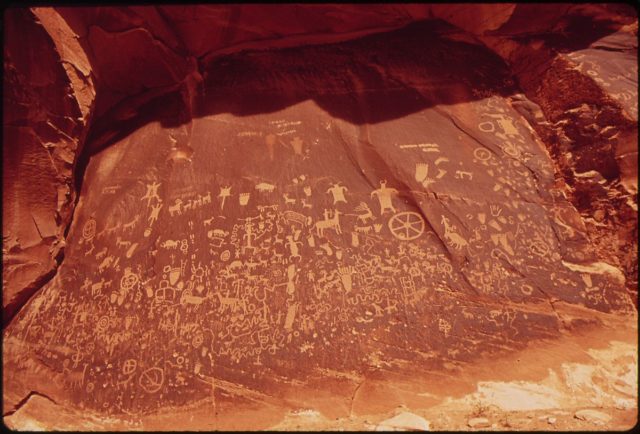
Using sharpened tools, the ancient artists produced these images by incising, picking, carving, or abrading the dark “desert varnish” surface of a rock to expose the lighter rock beneath.
The difference between the older and younger or more recent petroglyphs is that the first are more dark-colored and have a partial development of another layer of desert varnish. Petroglyphs tend to last longer than rock art paintings, known as pictographs, which are painted onto rock.
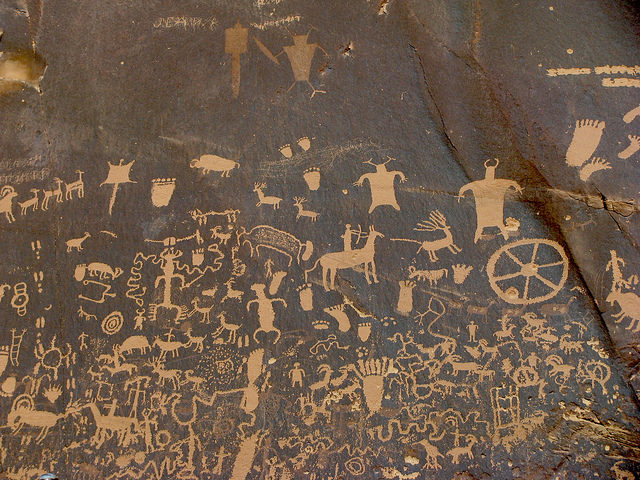
These petroglyphs are considered one of the finest examples of Indian rock art anywhere in the U.S. The site is one of the few petroglyph sites that are very easily accessible and the petroglyphs can be seen at very close range from a trail half a mile from US 191 northeast of the city of Moab.
In 1961, the site was designated a State Historical Monument, and in 1976 it was also added to the National Register of Historic Places listings in San Juan County, Utah, as Indian Creek State Park.
